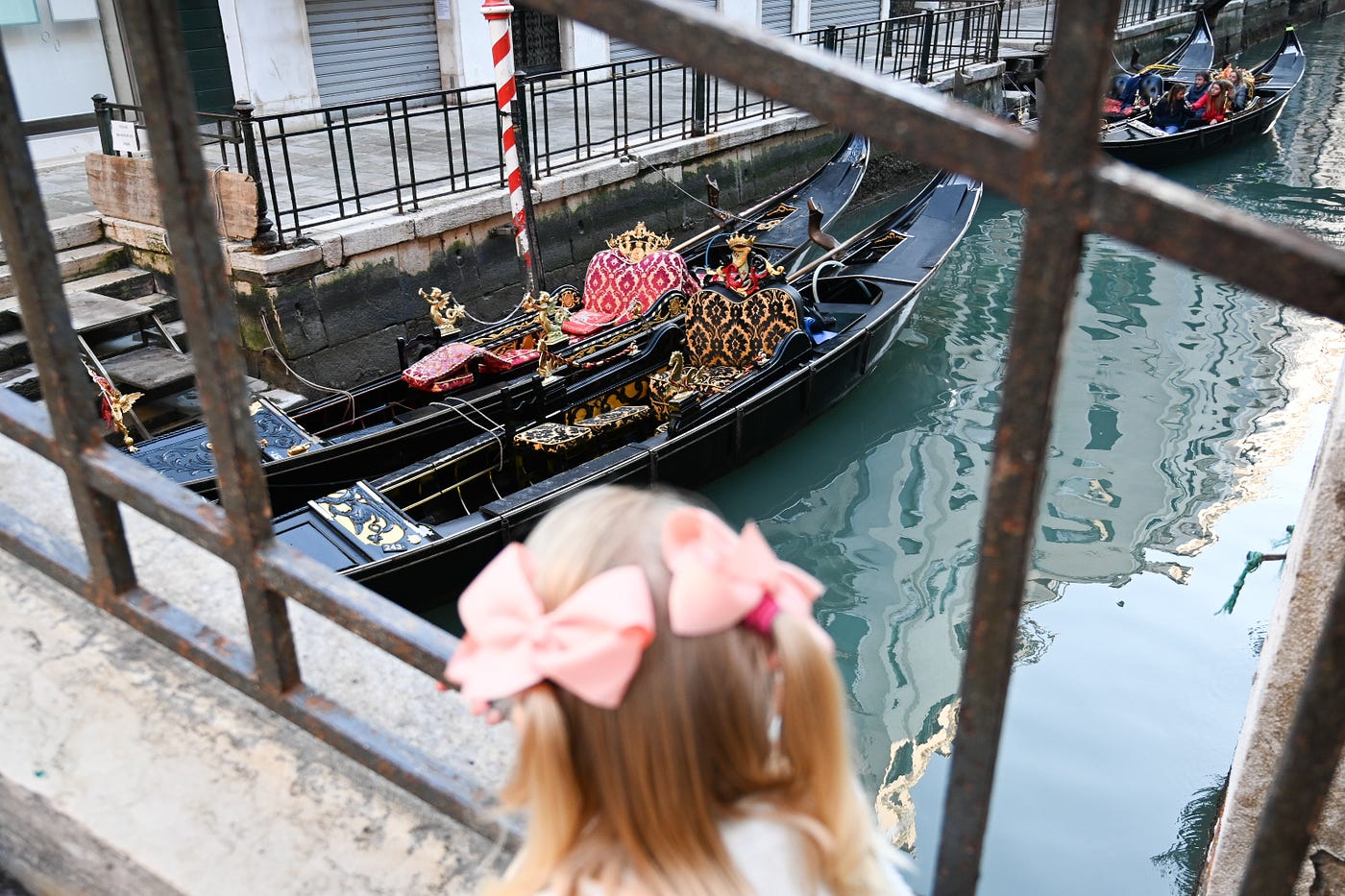Out for our morning walk in Venice, we came upon a gondolier stand, a gathering place for the gondoliers who guide the boats around Venice. Madison, our seven-year-old, noticed that they were all men in the group and she immediately walked right up to ask the men if there were any female gondoliers among them.
We found out that there was only ONE gondoliera (female gondolier) out of the 425 rowers in the city. And her name was Giorgia Boscolo.
As a family with four girls, we are always on the lookout for women who do things that challenge the accepted norm. We interview them, study them, and try to learn how they achieved their dreams.
My daughters and I looked at each other knowingly. ONE GONDOLIERA in all of Venice?
We had to find her!

Two days later, we got lucky. We spotted her standing near Hotel Bella Venezia. She wasn’t hard to miss with her long hair and her tell-tale striped boating shirt.
Giorgia Boscolo! It was her!
For over 900 years, only men could hold the gondolier position. Then in 2010, Giorgia Boscolo became the first gondoliera in Venetian history.
Being a gondolier(a) is an honored position in Venice. There are just 40 places on the prestigious gondolier course each year. If selected, the candidate must go through 400 hours of training.

They must show they can operate the oar lock, called a forcola, which is used to steady the oar as the gondolier(a) pushes the gondola through the canals. Gondolier(a)s must also learn a wide range of highly technical skills such as reading the weather, crisis management, and knowing the waterways.
And it’s a well-paid career, too, as a Venetian gondolier earns the equivalent of a $150,000 (USD) per year salary.
“You can do anything.” Georgia told my girls, sporting her charismatic smile and looking them straight in the eyes. “Don’t let anyone tell you differently. You could even be a gondoliera!”

The girls stayed talking with her for a while as I mused at how travel can bring to life these kinds of concepts, sometimes better than any school project or book report. Here she was — the first woman in 900 years to challenge this norm and succeed, and she was mentoring my girls.
Through various conversations with gondoliers, we learned that all Venetian gondolas are painted with exactly six coats of black paint.

Originally, this was a law made to quell the competitive nature that had developed between the nobles who owned the boats. They were always competing to see who had the fanciest and most decked out boat, and when the powers that be mandated them to paint them all black, it helped to calm the arrogance.
We noticed that although each gondola is painted black, they do have their own uniquely upholstered chairs and decorations inside the boats, and the boats have their own ornamental detailing also.

One such detail is called a ferro, and it is attached to the front of the boat. The ferro could be made from steel, aluminum or even brass. It’s used to counterbalance the weight of the gondolier so the boat won’t tip over.
The reverse S-shaped ferro has six prongs which are called rebbi. Together, they look like a comb with six prongs. The S-shape of the ferro denotes the twisting shape of the Grand Canal, and it’s six prongs pay homage to the six districts of Venice.

Curious to hear more stories about Italy and how to use them in your child’s education? Get this travel guide to Italy.
